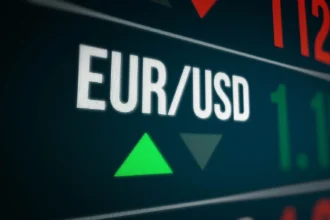Unveiling the Truth Behind the Pi Network Controversy
On March 27, 2025, Binance Square published an article titled, “Pi Network: A Revolutionary Crypto or the Next Big Scam?” that sparked much debate in the cryptocurrency community. The article takes a critical stance on Pi Network, questioning its legitimacy, utility, and long-term value.
In this blog post, we’ll break down the claims made in the Binance Square article and provide factual evidence to debunk the accusations. Pi Network has become a popular subject of debate in the crypto space, with many critics dismissing it as a scam, while others believe it could be the next big cryptocurrency project.
Let’s explore the truth behind these claims, analyze the agenda behind the article, and uncover whether Pi Network truly deserves its reputation.
The Old Conflict: Bybit’s CEO vs. Pi Network
The Binance Square article refers to the controversy that began about a month and a half ago, when Ben Zhou, CEO of Bybit, referred to Pi Network as a scam and a pyramid scheme. He cited a Chinese police report as his source of evidence. Many in the Pi community dismissed this claim, pointing out that the report had been misinterpreted and did not conclusively label Pi Network as a scam.
I also addressed this issue in a previous video, “Reality of China Police Case on Pi Network,” where I discussed the misinformation surrounding the case. Let’s now analyze the claims made in the Binance Square article, starting with the section titled “A Pyramid Scheme in Disguise?”.
Breaking Down the Claims: Fact vs. Fiction
1. Referral-Based Growth: MLM Comparison
Binance Square’s Claim: The article compares Pi Network’s invitation system to Multi-Level Marketing (MLM) schemes. It argues that Pi’s referral system creates an unsustainable, pyramid-like structure.
Fact: This comparison is misleading. Pi Network’s referral system is completely free, unlike traditional MLM schemes where participants must invest money or purchase packages to join. Moreover, Pi only uses one level of referrals, whereas traditional MLMs involve multiple levels. Therefore, Pi’s referral model cannot be equated to an MLM scheme. This claim is based on misinformation.
2. No Real-World Utility
Binance Square’s Claim: The article asserts that Pi Network has no real-world utility and is simply a concept without application.
Fact: This is another false claim. There are numerous Pi Network utility apps available today, including PiDAO Swap, TELTLK International, and various third-party partnerships. These apps have allowed Pi Network to integrate into the real world with exchange platforms and Visa card services. Ignoring these developments is intentional misinformation designed to mislead investors.
3. Locked-Up Tokens: Comparing Pi with HEX
Binance Square’s Claim: The article criticizes Pi Network’s locked-up token mechanism, comparing it to the controversial HEX project and its founder, Richard Heart.
Fact: The comparison between Pi Network and HEX is unfair and unwarranted. Pi Network uses the token lock feature to boost mining speed, a strategy entirely distinct from HEX’s tokenomics. Furthermore, Richard Heart was recently cleared of legal allegations in 2025. The comparison to HEX is nothing more than an attempt to tarnish Pi’s reputation.
4. No Open Mainnet: A Misleading Statement
Binance Square’s Claim: The article claims that Pi Network has not launched its mainnet, and that tokens cannot be transferred.
Fact: This statement is blatantly false. Pi Network’s mainnet is fully operational, and users can transfer Pi tokens between wallets and exchanges. The article completely ignores this fact, which is a clear attempt to spread fear and confusion among readers.
Price Data Misinformation
Binance Square’s Claim: The article falsely claims that Pi Network was listed on OKX at $0.67, later dropping to $0.69.
Fact: The real price movement of Pi Network’s token was initially listed at $2.88, before briefly dipping to $0.60, then rising to $3.33. As of now, Pi is trading at $0.89. The article deliberately misrepresents Pi’s price history to create confusion and panic among investors.
Why Was This Article Written?
The motivation behind this article is clear: spread FUD (Fear, Uncertainty, Doubt) about Pi Network. Binance and other whales in the crypto space want to acquire Pi at lower prices. By publishing negative articles, they can push the price down, making it easier for them to buy Pi at a bargain. Later, once they accumulate enough tokens, they will flip their position and promote Pi’s value at higher prices, profiting at your expense.
What Should You Do?
If you believe the Binance Square article, feel free to stay away from Pi Network. However, those who trust in Pi’s future should follow these steps:
- Hold your Pi tokens.
- Buy more Pi when prices drop.
- Take profits gradually as the price rises.
- Don’t fall for FUD tactics.
Remember, the market is a game, and those who hold strong and act wisely will benefit in the long run.
Pros & Cons of Pi Network 📈📉
Pros ✅
- Free to Join – No investment required for participation.
- Decentralized Project – Fully operational mainnet for token transfers.
- Growing Utility – Numerous apps and partnerships already in place.
- Active Community – Global support for Pi Network.
Cons ❌
- FUD Campaigns – Negative articles can create confusion.
- Price Fluctuations – The token price is volatile.
- Uncertainty in Regulatory Landscape – Crypto projects face global legal challenges.
Frequently Asked Questions (FAQs)
1. Is Pi Network a scam?
No, Pi Network is a decentralized cryptocurrency project with real-world applications. The claims about it being a scam are misleading and unfounded.
2. Why does Binance Square criticize Pi Network?
Binance Square and other entities may be using negative articles to manipulate the price of Pi in their favor.
3. Can I transfer Pi tokens?
Yes, Pi’s mainnet is operational, and users can transfer Pi tokens between wallets and exchanges.
4. What is Pi Network’s utility?
Pi Network has partnered with multiple companies to offer real-world services, including exchange platforms and Visa card services.
5. Should I invest in Pi Network?
If you believe in Pi’s long-term potential, it could be a good investment. Hold, buy low, and take profits wisely.
Disclaimer:
This article is for informational purposes only and does not constitute financial advice. Cryptocurrency investments are highly speculative and involve risk. Always do your own research before making investment decisions. The author is not responsible for any financial losses or damages incurred by following the information presented in this post.



